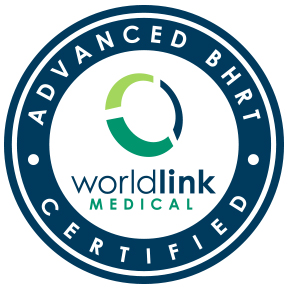Do you ever feel like your eyes are constantly dry, irritated, and uncomfortable? If so, you might not realize that these symptoms could be linked to diabetes. Diabetes and dry eyes often go hand in hand, causing discomfort and vision problems for many people. In this article, we’ll explore this connection and show you what you can do to achieve the clear and comfortable vision you deserve.
The Connection Between Diabetes and Dry Eyes
Dry eye syndrome happens when your eyes don’t make enough tears or when your tears evaporate too quickly. This can leave your eyes feeling gritty, burning, and sensitive to light. Diabetes can contribute to dry eyes in several ways:
- High blood sugar levels can damage the blood vessels in your eyes, making it harder for them to produce tears. This damage can also affect the nerves that control tear production, further worsening the problem of diabetes and dry eyes.
- Diabetes can cause nerve damage, which may affect the sensory nerves that trigger tear production. This disruption in communication between your eyes and brain can lead to reduced tear production and a higher risk of dry eyes.
- Certain medications used to manage diabetes, such as diuretics and beta-blockers, may have side effects that contribute to dry eyes. These medications can decrease tear production or change the composition of your tears, making them less effective at keeping your eyes moist.
It’s crucial for people with diabetes to be aware of this connection to keep their eyes healthy. Studies have shown that people with diabetes are more likely to develop dry eye syndrome than those without diabetes, highlighting the importance of addressing this issue head-on.
Symptoms of Dry Eyes in Diabetics
If you have diabetes and notice any of these symptoms, you might be dealing with dry eye syndrome:
- Stinging, burning, or scratchy sensations in your eyes
- Redness and inflammation
- Blurred vision, especially when reading or using digital devices
- Sensitivity to light, wind, or air conditioning
- Difficulty wearing contact lenses, as they may feel uncomfortable or cause irritation
- Watery eyes, which is a sign of your eyes overcompensating for dryness
- A gritty or foreign body sensation in your eyes
- Eye fatigue or strain, particularly after prolonged visual tasks
These symptoms can range from mild to severe and may change over time. If you notice any of these signs, it’s important to talk to your eye doctor to find out if you have diabetic-induced dry eyes. Your eye doctor can perform various tests, such as measuring tear production and assessing the quality of your tears, to diagnose dry eye syndrome and develop a treatment plan that works for you.
Managing Diabetes and Dry Eyes
Taking control of your dry eyes when you have diabetes means using a combination of strategies:
-
Control Blood Sugar Levels
Keeping your blood sugar levels within the target range can help prevent or slow down the progression of eye complications, including dry eyes. Maintaining good blood sugar control is key to reducing the impact of diabetes on dry eyes. This involves following a healthy diet, exercising regularly, and taking prescribed medications as directed by your healthcare provider.
-
Use Artificial Tears
Over-the-counter artificial tears can help lubricate your eyes and provide relief from dryness and irritation. Look for preservative-free options if you need to use them often. These drops can be a valuable tool in managing dry eyes. Your eye doctor may also recommend gel-based or ointment-based artificial tears for more severe cases or nighttime use.
-
Practice Good Eye Hygiene
Keep your eyelids clean and free of debris that can block the oil glands. Use warm compresses to help open up the glands and promote oil production. This can help alleviate the symptoms of dry eyes. Additionally, be gentle when rubbing your eyes and avoid touching them with unwashed hands to reduce the risk of infection.
-
Take Breaks from Screens
Prolonged screen time can contribute to dry eyes. Follow the 20-20-20 rule: every 20 minutes, look at something 20 feet away for at least 20 seconds. This can help reduce eye strain and dry eyes. Consider using blue light filters on your devices or wearing computer glasses to minimize the effects of digital eye strain.
-
Consider Omega-3 Supplements
Omega-3 fatty acids have been shown to help improve tear quality and reduce inflammation. Talk to your doctor about adding omega-3 supplements to your diet, as they may help your dry eyes. Good sources of omega-3 include fatty fish, such as salmon and sardines, as well as flaxseed and chia seeds.
-
Use a Humidifier
Dry air can exacerbate dry eye symptoms, especially in air-conditioned or heated environments. Using a humidifier in your home or office can help add moisture to the air and reduce the evaporation of tears, providing relief for those with dry eyes.
-
Wear Protective Eyewear
When outdoors, wear sunglasses or protective eyewear to shield your eyes from wind, dust, and other irritants that can worsen dry eye symptoms. This is especially important for people with diabetes and dry eyes, as they may be more sensitive to environmental factors.
The Importance of Regular Eye Exams
As a diabetic, you need to have regular comprehensive eye exams to monitor your eye health and catch any issues early on. Your eye doctor can assess the severity of your dry eyes and recommend the most appropriate treatment plan. This is especially critical when dealing with diabetes and dry eyes, as early intervention can prevent further complications.
During a comprehensive eye exam, your eye doctor will check for signs of diabetic retinopathy, cataracts, glaucoma, and other eye conditions that are more common in people with diabetes. They may also perform tests to evaluate your tear production and quality, such as the Schirmer’s test or tear breakup time test, to diagnose dry eye syndrome.
Based on the results of these tests and your overall eye health, your eye doctor may recommend additional treatments for dry eyes, such as prescription eye drops, punctal plugs to prevent tear drainage, or in-office procedures such as intense pulsed light (IPL) therapy or LipiFlow to improve oil gland function.
At Vital Health Solutions, Dr. Cheryl Winter and her team are dedicated to helping patients with diabetes manage their eye health and find relief from dry eyes. With years of experience and a compassionate approach, Dr. Winter provides personalized care to ensure that your eyes stay healthy and comfortable, even when faced with the challenges of diabetes and dry eyes.
Take the First Step Toward Relief
If you’re tired of dealing with the discomfort and frustration of diabetes and dry eyes, now is the time to take action. Click here to register for a free fifteen-minute discovery call with Dr. Cheryl Winter at Vital Health Solutions. During this call, you’ll have the chance to share your concerns, get answers to your questions, and discover how Dr. Winter can help you manage your dry eyes and diabetes.
Don’t wait another day to invest in your eye health and experience the difference that personalized, compassionate care can make. Your eyes deserve the best care possible, especially when dealing with diabetes and dry eyes, and it all starts with a simple phone call. Take the first step toward clearer, more comfortable vision.








